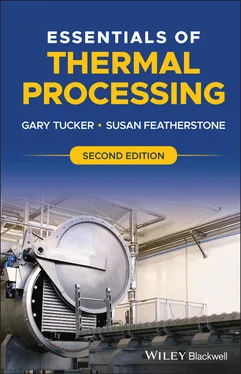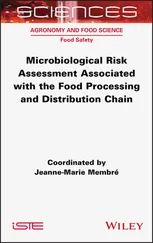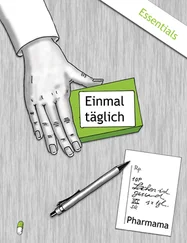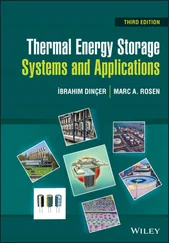Gary Tucker - Essentials of Thermal Processing
Здесь есть возможность читать онлайн «Gary Tucker - Essentials of Thermal Processing» — ознакомительный отрывок электронной книги совершенно бесплатно, а после прочтения отрывка купить полную версию. В некоторых случаях можно слушать аудио, скачать через торрент в формате fb2 и присутствует краткое содержание. Жанр: unrecognised, на английском языке. Описание произведения, (предисловие) а так же отзывы посетителей доступны на портале библиотеки ЛибКат.
- Название:Essentials of Thermal Processing
- Автор:
- Жанр:
- Год:неизвестен
- ISBN:нет данных
- Рейтинг книги:4 / 5. Голосов: 1
-
Избранное:Добавить в избранное
- Отзывы:
-
Ваша оценка:
- 80
- 1
- 2
- 3
- 4
- 5
Essentials of Thermal Processing: краткое содержание, описание и аннотация
Предлагаем к чтению аннотацию, описание, краткое содержание или предисловие (зависит от того, что написал сам автор книги «Essentials of Thermal Processing»). Если вы не нашли необходимую информацию о книге — напишите в комментариях, мы постараемся отыскать её.
Explore this fully updated new edition of a practical reference on food preservation from two leading voices in the industry Essentials of Thermal Processing
Essentials of Thermal Processing
Essentials of Thermal Processing — читать онлайн ознакомительный отрывок
Ниже представлен текст книги, разбитый по страницам. Система сохранения места последней прочитанной страницы, позволяет с удобством читать онлайн бесплатно книгу «Essentials of Thermal Processing», без необходимости каждый раз заново искать на чём Вы остановились. Поставьте закладку, и сможете в любой момент перейти на страницу, на которой закончили чтение.
Интервал:
Закладка:
Table of Contents
1 Cover
2 Title Page Essentials of Thermal Processing Second Edition Gary Tucker Campden BRI, Gloucestershire, UK Susan Featherstone Safe Food Consulting, Cape Town, South Africa
3 Copyright Page
4 Preface
5 Glossary of Terms
6 1 History of Thermal Processing 1.1 A BRIEF HISTORY OF THE SCIENCE AND TECHNOLOGY OF THERMAL PROCESSING 1.2 FOOD MICROBIOLOGY AS A SCIENCE 1.3 PACKAGING FOR HEAT PRESERVED FOODS 1.4 DEVELOPMENTS IN CANNERY EQUIPMENT 1.5 FOOD SAFETY References
7 2 Microbiology of Heat Preserved Foods 2.1 FOOD MICROBIOLOGY 2.2 FACTORS THAT AFFECT THE GROWTH OF MICRO‐ORGANISMS 2.3 DESCRIPTION OF SOME MICRO‐ORGANISMS OF IMPORTANCE TO THERMAL PROCESSING 2.4 RISK OF LEAKER SPOILAGE FROM DAMAGED OR COMPROMISED PACKAGING 2.5 A GUIDELINE FOR IDENTIFYING SPOILAGE IN CANNED FOODS References
8 3 Hurdles to Microbial Growth 3.1 CONTROL OF THE MICRO‐ORGANISM LOADING 3.2 USE OF RESTRICTIVE pH LEVELS 3.3 ANAEROBIC ENVIRONMENT OR MODIFIED ATMOSPHERE ENVIRONMENT 3.4 LOW TEMPERATURES 3.5 DEHYDRATION OR LOW WATER ACTIVITY 3.6 CHEMICAL PRESERVATION 3.7 IRRADIATION 3.8 COMBINATION TREATMENTS References
9 4 Low‐acid Canned Foods 4.1 PRODUCTION OF A THERMALLY PROCESSED FOOD 4.2 F 03 STERILISATION PROCESSES 4.3 COMMERCIAL STERILISATION 4.4 MICRO‐ORGANISM DEATH KINETICS 4.5 LOG REDUCTIONS References
10 5 Acid Foods and Other Pasteurised Products 5.1 BACKGROUND 5.2 PASTEURISATION 5.3 INHIBITORY FACTORS TO MICRO‐ORGANISM GROWTH 5.4 PASTEURISATION VALUE (P‐VALUE) GUIDELINES 5.5 GUIDELINES AND GENERAL RECOMMENDATIONS 5.6 THERMAL PROCESSING OF FRUIT 5.7 THERMAL PROCESSING OF PRODUCTS WITH LOW WATER ACTIVITY 5.8 THERMAL PROCESSING OF CURED MEATS References
11 6 Acidified Foods 6.1 BACKGROUND 6.2 ACIDITY MEASUREMENT USING pH 6.3 ACIDIFICATION OF FOODS 6.4 PROCESSING ACIDIFIED FOODS 6.5 DESIGN OF PASTEURISATION PROCESSES 6.6 HOT FILL AND HOLD PROCESSING 6.7 CRITICAL CONTROL POINTS IN THE PRODUCTION OF ACIDIFIED FOODS References
12 7 Heat Preserved Chilled Foods 7.1 UNDERSTANDING MICROORGANISM BEHAVIOUR 7.2 METHODS OF MANUFACTURE References
13 8 Processing Systems8.1 IN‐PACK PROCESSING: RETORT SYSTEMS 8.2 IN‐LINE PROCESSING: HEAT EXCHANGERS 8.3 NEW THERMAL TECHNOLOGIES References
14 9 Cook Values and Optimisation of Thermal Processes 9.1 MATHEMATICAL ANALYSIS OF COOKING 9.2 SETTING PROCESS TARGETS References
15 10 Process Validation10.1 TEMPERATURE DISTRIBUTION 10.2 HEAT DISTRIBUTION 10.3 HEAT DISTRIBUTION TESTING References
16 11 Process Validation 11.1 SETTING THE TARGET PROCESS VALUE 11.2 SELECTING THE CONDITIONS FOR THE HP STUDY 11.3 LOCATING THE PRODUCT COLD POINT 11.4 PROCESS ESTABLISHMENT METHODS 11.5 PROCESS CALCULATION METHODS References
17 12 Cooling Water Treatment 12.1 CHLORINE 12.2 CHLORINE DIOXIDE 12.3 BROMINE 12.4 OZONE 12.5 ULTRAVIOLET LIGHT 12.6 MEMBRANE FILTRATION References
18 13 Handling Processing Deviations13.1 WHAT CONSTITUTES A PROCESS DEVIATION 13.2 WHAT CAN GO WRONG 13.3 ACTIONS REQUIRED
19 14 Packaging Options for Heat‐Preserved Foods 14.1 METAL CONTAINERS 14.2 CAN CONSTRUCTION AND HANDLING 14.3 GLASS 14.4 PLASTICS, FLEXIBLES, AND LAMINATES References
20 15 Incubation Testing 15.1 PURPOSE OF INCUBATION TESTS 15.2 CAUSES OF SPOILAGE 15.3 DESCRIPTIVE TERMS FOR CANNED FOOD SPOILAGE 15.4 METHODS FOR INCUBATION TESTING 15.5 BIOTESTING References
21 16 Critical Factors in Thermal Processing16.1 BACKGROUND 16.2 KEY ASPECTS OF HYGIENE CONTROL SYSTEMS FOR FOOD PROCESSING (FROM CODEX ALIMENTARIUS) 16.3 IDENTIFYING CRITICAL CONTROL POINTS IN THERMAL PROCESSING References
22 17 Environmental Aspects of Thermal Processing 17.1 LIFECYCLE ASSESSMENT (LCA) 17.2 GREENHOUSE GAS EMISSIONS References
23 Index
24 End User License Agreement
List of Tables
1 Chapter 2 Table 2.1 Nutritional types in bacterial metabolism. Table 2.2 Theoretical increase in population of bacteria under ideal conditio... Table 2.3 Table showing heat resistance characteristics of some food‐related ...Table 2.4 Typical heat resistance of spores of some bacteria.Table 2.5 Most probable cause of spoilage of canned foods.
2 Chapter 3Table 3.1 Selected food preservation techniques and their effect on spoilage ...Table 3.2 Minimum growth temperatures for some pathogenic bacteria (taken fro...Table 3.3 Table showing the water activity of different food products.
3 Chapter 4Table 4.1 Heat resistance data for spoilage micro‐organisms relevant to low‐a...Table 4.2 Process times at 121.1 °C to achieve 12‐log reductions in spores of
4 Chapter 5Table 5.1 pH values of some fruits.Table 5.2 Limiting pH values for growth of micro‐organisms of concern in the ...Table 5.3 Heat resistance data for Bacilli and Clostridia applicable to paste...Table 5.4 Heat resistance data for other bacteria applicable to pasteurised prod...Table 5.5 Heat resistance data for other yeasts and moulds applicable to past...Table 5.6 Suggested P ‐values ( T ref93.3 °C, z 8.9 °C) for fruit and vegetables...Table 5.7 Examples of different water activity food groups.Table 5.8 Micro‐organisms of concern, risks, and their control in heat‐treate...
5 Chapter 6Table 6.1 Table showing recommended criteria for judging whether a pH shift i...Table 6.2 Concentration of [H 3O +] and [OH −] in various liquid foods at ...Table 6.3 Table of p K afor some weak acids.Table 6.4 Comparative heat resistance of bacteria important to thermally proc...Table 6.5 Table of suggested F ‐values for high acid and acidified products....Table 6.6 Table of proposed process values ( F value) in relation to pH and ca...Table 6.7 Table of limiting pH values below pH 4.5 for growth of micro‐organi...Table 6.8 Thermal processes for acidified foods.Table 6.9 Thermal process lethalities for acidified foods.Table 6.10 Hot fill and hold process and centre container temperature recomme...
6 Chapter 7Table 7.1 Heat resistance of psychrotrophic C. botulinum .Table 7.2 Heat resistance of B. cereus spores.Table 7.3 Levels of microorganisms in the raw ingredients of a prawn makhani ...
7 Chapter 9Table 9.1 Kinetic factors for vitamin destruction.Table 9.2 Kinetic factors for enzyme destruction.Table 9.3 Kinetic factors for pigment destruction.Table 9.4 Kinetic factors for colour changes.Table 9.5 Kinetic factors for texture changes.Table 9.6 Effect on F 0and C ‐values of increasing the product temperature.Table 9.7 Process temperatures and hold times that result in a minimum botuli...Table 9.8 Process temperatures and times that achieve P ‐value of 10 minutes at...Table 9.9 Process temperatures and times that achieve F 03 end of heating, toge...
8 Chapter 10Table 10.1 Approximate values for the external heat transfer coefficient ( h o)...Table 10.2 Approximate values for the x / k term in Equation (10.5) and resistan...Table 10.3 Approximate values for the internal heat transfer coefficient ( h i)...Table 10.4 Methods used in different retorting systems to ensure good heat di...
9 Chapter 11Table 11.1 Possible marker organisms for use with microbiological log reducti...Table 11.2 Key attributes of the Bacillus amyloliquefaciens α‐Amylase TTI.
10 Chapter 12Table 12.1 Comparing the 2‐ and 3‐chemical method systems for the formation o...
11 Chapter 13Table 13.1 Examples of the more common process deviations experienced by cann...
12 Chapter 14Table 14.1 Table of some plastics used for food packaging and their melting p...
13 Chapter 15Table 15.1 Causes of canned food spoilage.Table 15.2 Required sample size to be 95% sure of finding a defective contain...Table 15.3 Recommended temperatures and times for incubation testing.
Читать дальшеИнтервал:
Закладка:
Похожие книги на «Essentials of Thermal Processing»
Представляем Вашему вниманию похожие книги на «Essentials of Thermal Processing» списком для выбора. Мы отобрали схожую по названию и смыслу литературу в надежде предоставить читателям больше вариантов отыскать новые, интересные, ещё непрочитанные произведения.
Обсуждение, отзывы о книге «Essentials of Thermal Processing» и просто собственные мнения читателей. Оставьте ваши комментарии, напишите, что Вы думаете о произведении, его смысле или главных героях. Укажите что конкретно понравилось, а что нет, и почему Вы так считаете.












